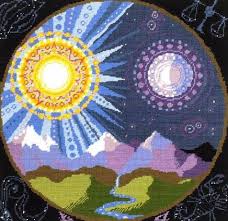This summer I watched the documentary The Green Planet featuring David Attenborough. The series gave me a great appreciation for plants, which do not resist change but adapt to it in marvelous ways. Whether they encounter light, dark, moisture, drought, wind, or predators, they react to outside conditions and their own inner nature by sprouting, growing, reproducing, diminishing, and dying in due measure.
If we pay attention to the vegetation of the green planet that is our home, it will teach us equanimity and the ability to sit with what is. In quietness and contemplation, we come to learn that instead of trying to change what is, we can use our own inner resources to adapt to our conditions. That might mean adjusting our hours for sleep and work according to the seasons, as St. Benedict outlined in his Rule, or using our technological advances to work from home when snowstorms or pandemics hit.
Nature has the power to humble us. However, when we relinquish or desire for dominion over the natural world, it is freeing to realize that we can be partners with soil, water, plants, and animals to nurture life and affirm God’s proclamation about creation: It is good.

